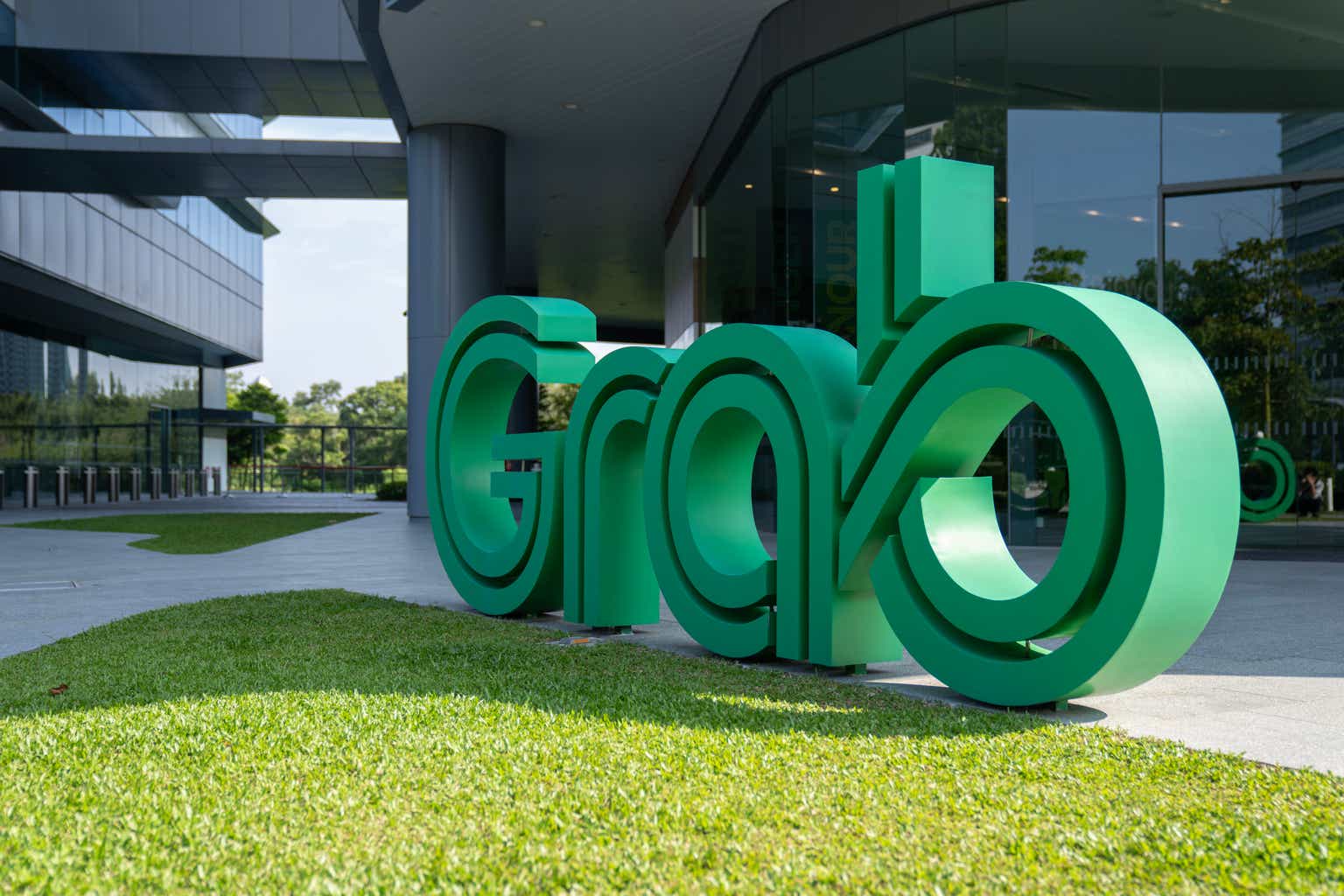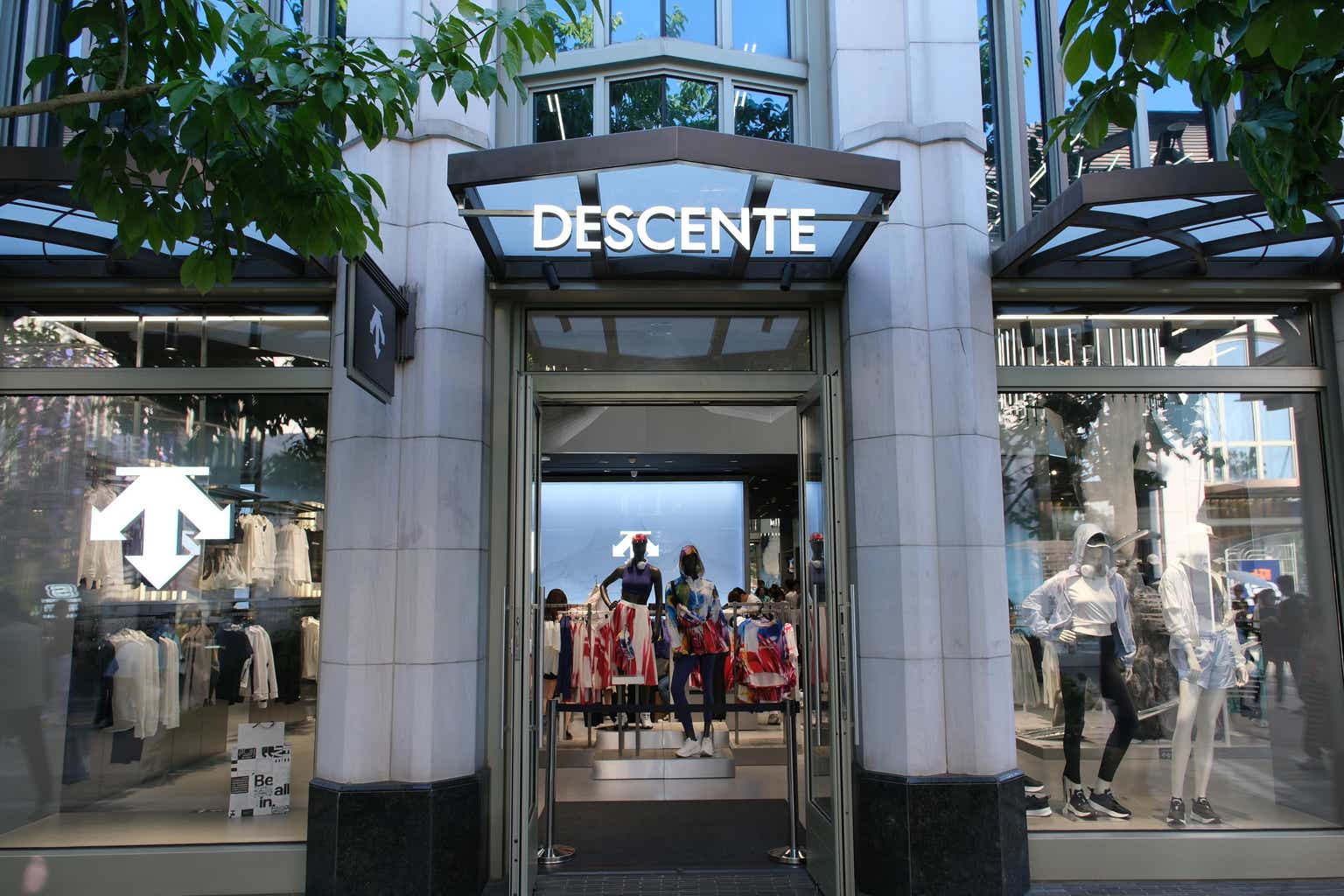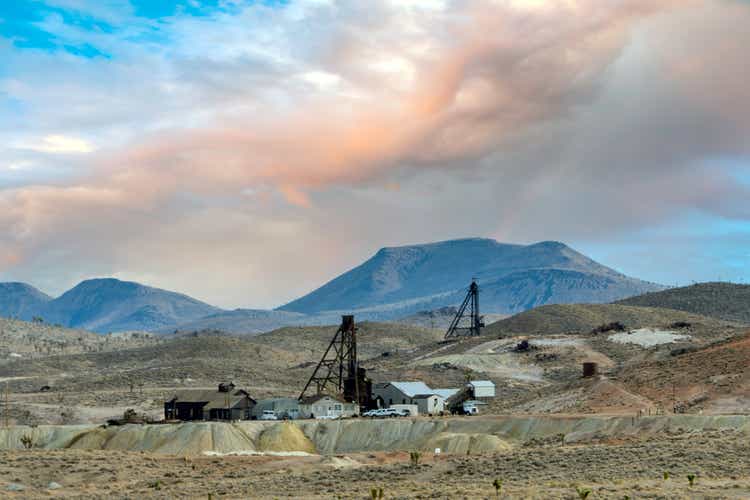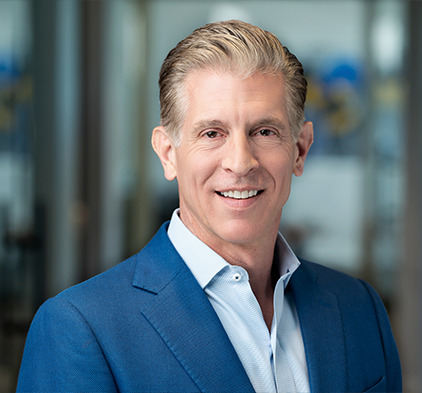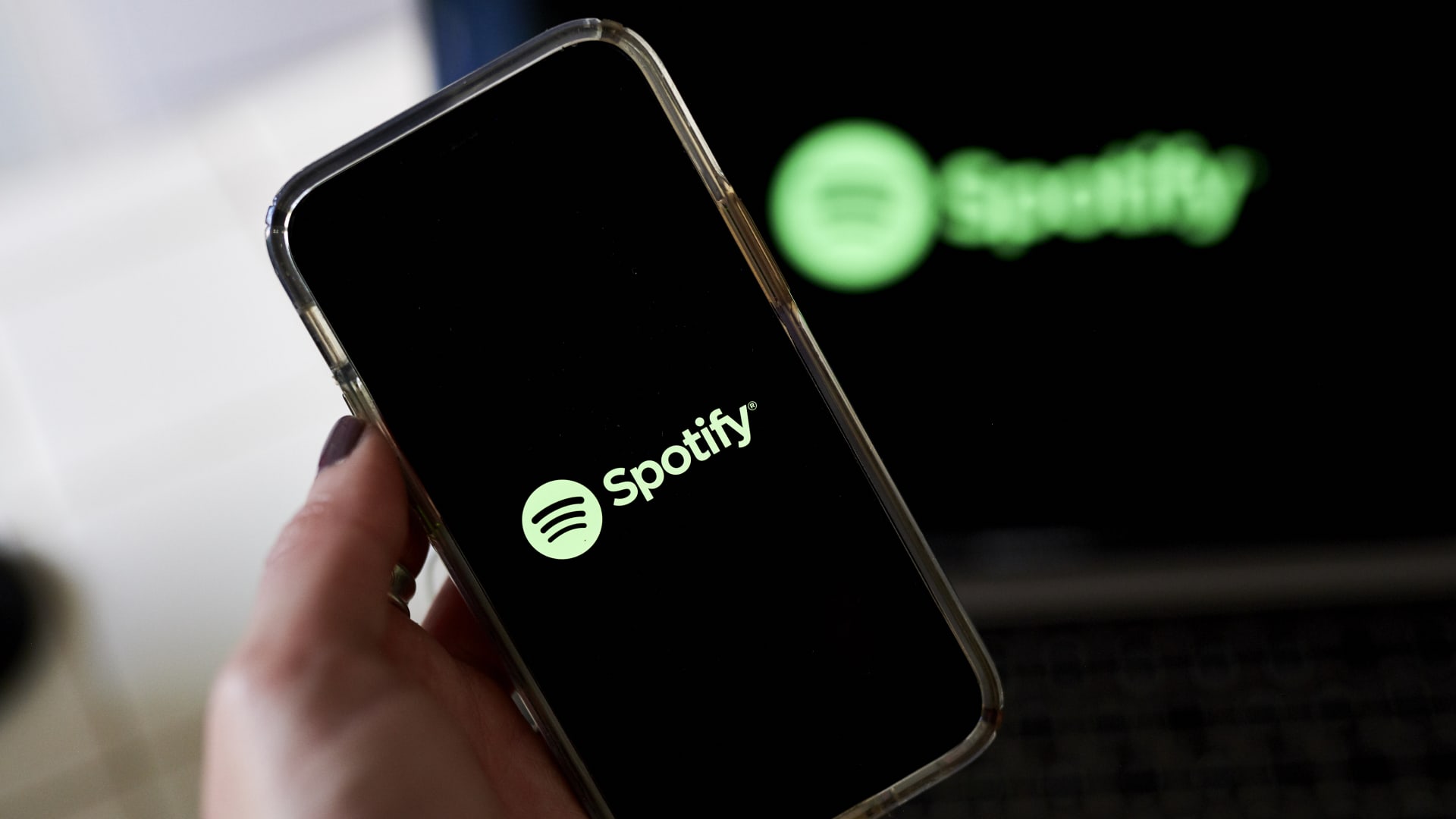Datadog, Inc. (NASDAQ:DDOG) The Goldman Sachs Communacopia & Technology Conference Transcript September 6, 2023 1:10 PM ET
Executives
David Obstler – Chief Financial Officer
Yuka Broderick – Vice President, Investor Relations and Strategic Finance
Analysts
Kash Rangan – Goldman Sachs
Kash Rangan
Yeah. The summer is over and we are here. I think it get terrific.
David Obstler
It was very good. Yeah. Yeah.
Kash Rangan
Okay. I think we are live. So we are going to wait for few more seconds as people’s streaming. All right. David, thanks for coming to the Con — the Goldman Sachs Conference.
David Obstler
Thank you for having us again.
Kash Rangan
Absolutely. And I believe that your former Goldman alumni are…
David Obstler
I am a long time ago. I started out as an associate and investment banking at Goldman Sachs.
Kash Rangan
Wow!
David Obstler
Yeah.
Kash Rangan
And we have another Goldman alumni here, too. Yuka?
Yuka Broderick
Yeah.
Kash Rangan
Welcome back.
Yuka Broderick
Thank you.
Question-and-Answer Session
Q – Kash Rangan
So you went here last year. Really happy to have David Obstler, by the way, CFO of Datadog. In case you do not know, you probably know him quite well. We have more and more people coming in as we speak which is great. So as you look at the company four year to five years from now, what do you and Ali and is the executive team…
David Obstler
Yeah.
Kash Rangan
… wanted to be, what are your goals for the company four years to five years from now?
David Obstler
Yeah. I think they have been very similar since the founding of the company that Ali, Alexis and founders have wanted to provide a platform that is one of the first things, if not the first thing that’s turned on and use when DevOps professionals come in, in the morning and they are on it all day and that they are finding a persistent and increased utility in monitoring — deploying monitoring and remediating problems in mission-critical real-time apps.
And so that can be in terms of having more and more data ingested, to have more and more functionality, and more and more utility to clients, but basically having it being ubiquitously just deployed platform that all those professionals are using every day to increase the utility of the work.
Kash Rangan
Got it. And when you think about the evolution of the company, what are the problems that you see solving for customers a few years from now that you are — you don’t have the ability to solve them, because you just don’t have the resources, but if you had all the resources. What are new things you could be solving for your customers?
David Obstler
Yeah. Definitely. There’s — one of the things that is increasingly being demanded is the injection of security and looking at the security of applications, at the point of deployment and in production. And so we have been providing a platform that allows clients to see the uptime latency, what are the developer — whether the applications are working and one of the increasing demands that we see in the future is to put security.
Another would be to have earlier and early examination of applications in the developer cues, which is our CICD. And another, which I know we are going to talk a lot about is to use AI and large language models in the platform and to monitor those workloads. So those are some of the bigger themes as we develop the platform over time.
Kash Rangan
And I did manage to attend DASH briefly…
David Obstler
Yeah.
Kash Rangan
… in San Francisco. There’s a lot of generative AI announcements and also core platform-oriented developments for the logging product, which we will get to in a second. But I was really, really intrigued by the LLM observability product.
David Obstler
Yeah.
Kash Rangan
It looks like it’s in controlled beta and I loved Bits-to-Bits, Bits AI…
David Obstler
Yeah.
Kash Rangan
… chatbot. Can you tell us a little bit more about what is the opportunity, maybe just rephrase a little bit as to what is the LLM monitoring they are all about?
David Obstler
Yeah.
Kash Rangan
What is Bits AI and then if you can tell us what is the opportunity that you are going after with these two key products?
David Obstler
Yeah. Definitely. So glad you asked. One of the largest portions of our product release was in the LLM and essentially as we believe our clients are going to be injecting AI as we just talked about into their platforms and their products. We have to be ready to help them monitor that, which is the LLM product. We think the — what’s going to happen over time and this has happened repeatedly is this will produce more and more data and hosts in our clients delivering their platforms to their clients and in the LLM side we want to be prepared for that. That’s number one.
Number two is our own platform, not our clients, being able to inject AI into it and that’s what Bit is, essentially there are many areas, as you mentioned in our platform that we have been enhancing, whether it be the log side, whether it be ITSM into the platform and this is another area which we think will enable our clients to use our platform more effectively, make inquiries, improve the time to remediation and that’s what Bits is.
And then there’s a third leg of it, which we talked about on the earnings call, which is a number of companies are providing tools to their customers, which is what we said we are up to 2% of our ARR from clients who are providing those type of tools.
Kash Rangan
Managed services kind of…
David Obstler
Managed — they are providing that.
Kash Rangan
Okay.
David Obstler
So all of that are — those are the three main areas of opportunity, and as you have said, thank you for coming to that.
Kash Rangan
Yes.
David Obstler
You saw a number of those launches and the ways we are thinking about providing more value to our clients through AI.
Kash Rangan
Got it. Got it. And this Bits AI, it seemed like a really ChatGPT meets Datadog kind of a thing, right?
David Obstler
Yeah.
Kash Rangan
It was just speaking your language, at the same time, it had remnants, it looked like a familiar user interface of ChatGPT.
David Obstler
We use the doc.
Kash Rangan
We use — okay.
David Obstler
Right.
Kash Rangan
Okay.
David Obstler
Yeah.
Kash Rangan
Okay.
David Obstler
It is very much so when you think about what happens, our use cases are real-time and speed is of the essence.
Kash Rangan
Yeah.
David Obstler
So it’s very important for our clients in DevOps and security to be able to see what’s going on. And this is a continuum, it’s not like this is the first time we have had machine learning or AI. We have constantly been innovating, so to provide ways for the client to speed up their investigations. In this case over time, they will be able to go in and make inquiries and get and speed up the time, because as I said, times of the asset. So that’s the vision and what we are working towards in order, again, to provide more value to our clients.
Kash Rangan
Okay. Great. And what is the early feedback on LLM observability and Bits AI so far?
David Obstler
It is early.
Kash Rangan
Yeah.
David Obstler
And we tend not to overpromise. But I think you were there, you heard tremendous reception. It’s very logical to our clients. Our clients are trying — are starting to deploy large language models in their platforms and they very much want Datadog to keep up with that and be able to monitor. So there was sort of a rousing reception at the DASH Conference and then in feedback since and we are very optimistic that this will provide, again, value to the clients and being able to be monetized.
Kash Rangan
Got it. I think we were talking about this thing just before we started the conversation here.
David Obstler
Yeah.
Kash Rangan
How are companies monetizing this? We are starting to see some divergent streams.
David Obstler
Yeah.
Kash Rangan
Some companies still stick to the view that you can call as a separate SKU and charge a separate price list for it.
David Obstler
Yeah.
Kash Rangan
And some of these seem to think that what we need to just include this functionality in the base product.
David Obstler
Yeah.
Kash Rangan
And find a way for customers to migrate to the enterprise version as opposed to standard version. How are you thinking about pricing and packaging of generative LLM monitoring and Bits AI?
David Obstler
Yeah. Good question. We were talking about that. I think it is early. We are all trying to figure this out. In terms of the LLM monitoring…
Kash Rangan
You should ask the LLM, how should I price this.
David Obstler
We should. Exactly. And maybe we will get an answer.
Kash Rangan
Yeah.
David Obstler
LLM probably is a little clear in that, it is likely to produce more data flowing into the platform, more hosts, more processing, and therefore, we are likely, again, we don’t know for sure, we are likely to monetize this through volume.
And that’s what’s happened in Datadog as applications have gotten more complex. Same thing as Kubernetes and containers and microservices. It’s produced more data and more appetite for Datadog to organize.
So we think that’s the way to monitor although it’s early and we don’t know yet with bits. Often, we release functionality. We get feedback for clients. As we talked about, many of our platform enhancements are parts of the platform themselves, embedded in the platform.
Kash Rangan
Yeah.
David Obstler
We have a very large investment there and others are monetized as SKUs and we were talking about this and we don’t know the answer yet. But we are going to get as always we get from clients and before we figure out how to price that.
Kash Rangan
Got it. Got it.
David Obstler
Yeah.
Kash Rangan
To dig into the core product monitoring such amazing runway, major, major success. Typically, when products like that hit mainstream adoption, the consumption gets to be very rapid. And then you realize that as a customer maybe I am spending a lot of money on this thing…
David Obstler
Yeah.
Kash Rangan
… for good reason, but at some point, it starts to work against itself that the success of the product becomes an impediment for further adoption. How are you thinking about pricing for core monitoring and ensuring that if you want this to be multiples of billions of dollars of business.
David Obstler
Yeah.
Kash Rangan
It’s priced increasingly more attractively so as to make this a mainstream customer…
David Obstler
Yeah.
Kash Rangan
… discussion.
David Obstler
It’s a good question. One of the best examples of that, again, at DASH was Flex logs, because essentially, from the beginning, we priced our logs to enable a lot of data to flow in, meaning less pricing on ingestion and more of it on the action of indexing.
But then over time and as we have evolved our platform, our Husky platform, et cetera. We have realized that clients have different use cases and logs, which is one of the more sort of used as sensitive.
Some clients want the logs hydrated and rapidly available. Other times, it can be archived. So we have done a lot of innovation trying to separate out the pricing and indexing and that’s what Flex logs are. It’s a good example. I think we saw at — there was a lot of clapping when we announced that…
Kash Rangan
We saw. Yeah.
David Obstler
… saw that.
Kash Rangan
Yeah.
David Obstler
And that’s because, like you said, this solves client’s problem in being able to use logs as they need it, but not overspend, and in this case, we are essentially chunking up indexing. So those that need it faster, those that need it real-time, they can pay a price, but if you don’t and you can have it in a different way that you can have that.
And this can open up a lot more use cases in security, network and transactions, which is a very, very good example of what you are saying, how we are trying to slice and dice the product to provide value, but also make it affordable.
Kash Rangan
Got it. Will that be applicable and monitoring as well the core cloud monitoring, infrastructure monitoring?
David Obstler
Yeah. It will be part, it will be likely — it will be part of — it will be a SKU or a way that you can consume logs.
Kash Rangan
Okay.
David Obstler
And it will be part of the core monitoring platform.
Kash Rangan
Got it. Got it.
David Obstler
Yeah.
Kash Rangan
So because the SKU for logs is different from monitoring, very difficult.
David Obstler
Definitely. So going back to that, so the way we price is essentially by SKU and the main SKUs are host or infrastructure, then containers, Kubernetes, serverless. Then in APM, we have really two main structures we have at post-base based on the — what you are monitoring and then we have a whole digital experience, aesthetic. And then in logs, which is sort of the third main SKU, we have ingest pricing and indexing pricing.
Kash Rangan
Yeah.
David Obstler
And this will be another variation of the way we are doing index pricing.
Kash Rangan
Got it. Yeah.
David Obstler
The storage and compute more to allow clients to have more control…
Kash Rangan
Yeah.
David Obstler
… over how they are using the log products.
Kash Rangan
Got it. Got it. So how much of that is applicable to the core monitoring products. Could you do this kind of pricing — tiered pricing for the core monitoring product as well, the cloud infrastructure monitoring too?
David Obstler
Yeah. We are because, essentially, it’s the same thing. So essentially it opens more use cases, but also allows you to calibrate your logging the observability well.
Kash Rangan
Okay.
David Obstler
It both opens up more use cases…
Kash Rangan
Got it.
David Obstler
… and provides more efficiency within the core monitoring program, again, in the log pillar.
Kash Rangan
Yeah. Yeah. And I don’t know when this change was made, but what is the customer’s reaction to the new pricing?
David Obstler
We are sort of it — we are — I think we just are in the process of launching this, but you heard the reception.
Kash Rangan
Yeah.
David Obstler
So…
Kash Rangan
For logging. Yeah.
David Obstler
…for logging. We are very confident. So this is based on and we are really good at this. This is based on feedback from customers.
Kash Rangan
Yeah.
David Obstler
This is a place where you are able to get a lot of feedback because you can see how clients are using logging. And in many discussions with clients, how they might be overusing logging or not realizing the full potential.
Kash Rangan
Yeah.
David Obstler
So this, as you saw at DASH got a big reception because…
Kash Rangan
Yeah.
David Obstler
… of that type of feedback and it was created both at the platform level with us trying to innovate the platform to make both storage and compute and indexing more effective, but also being able to monetize this and offer this type of product apply.
Kash Rangan
Got it. Got it. And I guess you have three tier standard Flex archives. Can you tell us a little bit about how you price the three different offerings and will customers ultimately buy more because there’s a tiered approach and so they can use the P Time [ph] SKU and spend more with Datadog or quite a bit?
David Obstler
We think — so the pricing don’t think it’s out yet. It will be.
Kash Rangan
Yeah.
David Obstler
We are working on it. But, yes, the idea is two-fold. One, for them to be able to afford and have logging in new use security, it might be something where you can take it out of archives, where you don’t need it real-time. So it’s both to get additional use cases and to make it more efficient in the use cases that clients are currently in observability. So both, again, it’s early. We will report on this more. Again, it’s not out yet.
Kash Rangan
Yeah.
David Obstler
It’s introduced, but it’s not being used by clients.
Kash Rangan
Yeah.
David Obstler
But we will give some more metrics on this, but we do think it’s solved both, which is greater efficiency of existing use cases and more use cases.
Kash Rangan
Yeah. I saw the demo of the logging product and there was a very savvy customer that had worked with other legacy technologies that we shall not name here.
David Obstler
Yeah.
Kash Rangan
And their mines were blown looking at the demo…
David Obstler
Yeah.
Kash Rangan
They said, can you — it was a live demo. Can you pack? Can you put in 2 terabytes as opposed to 1 terabyte?
David Obstler
Yeah.
Kash Rangan
Whatever that system just flew right through it and it was visceral. So not so often that you see the visceral feedback, the client’s, so like, they came in a skepticism, yeah, I know we have tried this log from this company, that company.
David Obstler
Yeah. It was great thing.
Kash Rangan
Their prices let up…
David Obstler
Yeah.
Kash Rangan
… and they were like, oh, can you do this?
David Obstler
Yeah.
Kash Rangan
And they were testing double the number of terabytes.
David Obstler
Yeah.
Kash Rangan
I want to check the response speed, was it like 10 million seconds, they are taking all these notes and they were done exhausting…
David Obstler
Yeah.
Kash Rangan
… the demo guy with all kinds of demands and they came back and said, and…
David Obstler
What…
Kash Rangan
… I asked them what do you think?
David Obstler
Yeah.
Kash Rangan
And they said, wow, this is mind blowing stuff.
David Obstler
Well, when you — when the keynote was happening and there are a lot of products, so there’s enthusiasm. But there was clapping and standing ovation for that and then the feedback we have been getting is similar to what you are saying.
So that makes us feel good. It makes it good or listening to clients and that can provide opportunities for Datadog. So the more data that flows into the platform, the client is happy about the more use cases and the more ways to monetize and so we feel good about this…
Kash Rangan
Yeah.
David Obstler
… as an opportunity for us. Thanks for the feedback.
Kash Rangan
Absolutely. Absolutely. So let’s talk about consumption trends.
David Obstler
Yeah.
Kash Rangan
Big debate in the industry, at least in our industry and your industry as well.
David Obstler
Yeah.
Kash Rangan
So can you tell us a little bit about what — the trends that you saw as the quarter unfolded. It sounded like you guys came out of the quarter feeling a whole lot better than going into the quarter. Just a view for the dynamics?
David Obstler
Yeah.
Kash Rangan
How things change for the better as you…
David Obstler
Yeah.
Kash Rangan
… talk more about that, if you can?
David Obstler
So there’s a lot of pieces of this. So this optimization, which started pretty much in Q2 of last year is continuing. We — I think, have said that, we see some signs of stabilization, particularly in the most effective customers, that’s one sign where they have maybe finished their optimization looks like it and have stabilized an amount of spending. And so that’s one sign we talked about.
In terms of the quarter, we said was overall Q2 showed more optimization than Q1. But it had been essentially focused more in the middle of the quarter and towards the end of the quarter and into July, we saw some better track.
Now we want to be very careful because we can’t predict this, we don’t control this. So when we provided our guidance, we didn’t take that into account, we looked at the usage that when the optimization that was happening weighted average in Q2 and then discounted that. But at the same time, we wanted to provide that information that the pressure was relieved a little bit at the end of the quarter.
Now we caution everybody, we are talking in micro days here and we can’t predict that it will and aren’t going to give an update from what we said on the call from here. But there’s a number of positives or negatives, the new logos look strong, the RPO was higher, the optimization continued but was a little bit more benign towards the end of the quarter and in July. So it’s confusing out there and what that probably is that you are getting towards some end of this…
Kash Rangan
Yeah.
David Obstler
We can’t be precise about when it is going to be over.
Kash Rangan
Got it. And also some clarity on the number of customer adds.
David Obstler
Yeah.
Kash Rangan
I think the — it — you have some adjustment to the base even if you make the adjustment, you certainly…
David Obstler
Yeah.
Kash Rangan
… had good CRPO.
David Obstler
Yeah.
Kash Rangan
But the number of customer adds was a little on the lower side, was it because you had larger deals, help us understand…
David Obstler
Yeah.
Kash Rangan
… the dichotomy between the customer adds and the CRPO that came in actually that was expected?
David Obstler
Yeah. So in terms of gross customers or the numbers we brought in, it was very consistent with the previous quarters and it was larger average customer. So it was a larger gross add.
Kash Rangan
I see. Okay.
David Obstler
And then we said at the lower end, we have had sort of boring on free tier eliminations from the customer base which depress the net customer. We also noted that we had a cleanup of a couple of hundred customers totaling $50,000 of revenue. So not significant from revenue, which was just tuning up our processes about who’s using the platform or not, because there is that net number that was…
Kash Rangan
80 versus 130 whatever. Yeah.
David Obstler
We want to make sure that the gross number was pretty consistent and larger customers, but then it was depressed by this sort of flowing.
Kash Rangan
Got it. Okay. So not to read too much into it.
David Obstler
Yeah.
Kash Rangan
Okay. Got it. Can you tell us more about — I mean, you had a couple of big customer wins, the seven-figure land and the broadcaster replacing…
David Obstler
Yeah.
Kash Rangan
… a legacy solution. What are customers replacing and why is Datadog winning all these replacement deals?
David Obstler
Yeah. Very good point. We have been watching this. We see a persistent and increasing trend towards consolidation. As we said, one of the benefits of the Datadog product is the platform and the way everything can be seen in a single pane of glass.
So those were lands where they already had workloads. It was not greenfield. But they decided to consolidate on Datadog. And in some of those cases, they were replacing another software solution, and in some, they were replacing open source.
And so we see both happening and continue to see the market flowing and consolidation towards our platform and those were some larger examples about, this has been going on for some time and was strong in the quarter as it has been.
Kash Rangan
Okay. I want to just fly a little bit higher on altitude and then come back down and the topic of budgets, as you talk to customers, how are they developing their views on what calendar 2024 is going to be for them from a IT spending perspective, strategic objectives, because we have been through a period of past 18 months of uncertainty…
David Obstler
Yeah.
Kash Rangan
… but now things seem to be…
David Obstler
Yeah.
Kash Rangan
… kind of stabilizing. Jan Hatzius, our Chief Economist, is calling for a lower property of a recession and a soft landing.
David Obstler
Yeah.
Kash Rangan
We call that software landing.
David Obstler
Yeah.
Kash Rangan
It’s patent Goldman Sachs Software Landing.
David Obstler
Okay. Did you trademark that?
Kash Rangan
Well, it’s already — it’s in public domain, so…
David Obstler
Yeah. Yeah. Yeah.
Kash Rangan
And its advertisers at Goldman Sachs…
David Obstler
Yeah.
Kash Rangan
… branding things, so I cannot copy.
David Obstler
Yeah. Yeah. Yeah. It’s been — so we have had, as we talked about, good greenfield and consolidation behavior. So in the most important projects we have had consistency. Pipelines have been strong. They continue to be. That’s a sign of confidence. Yet at the same time, we have the continuation of cost control and sort of where budgets land will most likely be the intersection of those.
Too early to tell. I think we said we see some troughing and so there’s some good signs. But again, we are sort of a follower in the bad and need to wait to see how budgets develop for 2024. Although, we do have confidence that given the gross retention rate, given the fact that observability is important, given the fact that the number — percentage of workloads in the cloud is still low and modern applications are increasingly important to our clients that we will have a time when those IT budgets are restored and we are confident of the long-term here.
Kash Rangan
Got it. Got it. Got it. Let’s talk about hiring. How restrained had the company been in hiring as we were working through the spirit of macro uncertainty.
David Obstler
Yeah.
Kash Rangan
And where are you with hiring, because if you do see the growth opportunities next year…
David Obstler
Yeah.
Kash Rangan
… will you be tempted to accelerate hiring back again?
David Obstler
So we have — we made a lot of investments the previous two years. Sales, for instance, we expanded our capacity. That capacity is ramping. We have lower attrition in sales. So this year we are getting the benefit of a number of the pace of investment in the past. But we did get more cautious as we began to see the environment change.
But unlike a lot of companies, we have continued to hire. We have continued to hire strongly in R&D. We have continued to hire in the regions in sales and marketing where we feel we are underpenetrated and we haven’t had risks or anything like that. So we have continued to maintain it.
And I think what we will do in planning for next year is sort of calibrating what we are seeing and because we believe there’s a very long-term opportunity, we will continue to make bets based on where we see the environment. But we haven’t been as much stop and start as others. We are still been hiring this year and making investments given the long-term opportunity.
Kash Rangan
Got it. I wanted to pulse stick to see if there’s any questions from our clients here. If you have a question, just raise your hand and try to get a mic over to you. Okay. There’s a question all the way in the back.
Unidentified Analyst
Hi. You did an excellent job in expanding your operating margins. How far can you go before actually compromising maybe your topline growth?
David Obstler
So I just — I couldn’t hear exactly is that the question…
Kash Rangan
We have done a great job on margins.
David Obstler
Okay.
Kash Rangan
How much higher can they go without compromising the topline growth rate?
David Obstler
Exactly. That’s what we think about all the time. I mean, we are a product led company. I think if you look at our R&D as a percentage of revenues, we continue to invest rapidly and think there’s a long-term opportunity. On the other hand, there’s a lot of scalability in our model, which has been evidenced in gross margins and our overall margins.
So are building for the long-term. We are going to invest for the opportunities that are in front of us and so I think we are in a good place now and still prioritizing some of the higher priority projects, and certainly, we will prioritize growth going forward given the large opportunity we have.
Kash Rangan
Okay. Any other questions? I have one on the consumption model. Are there limits to predictability of margins, I mean, if you have a spike in consumption, the margins go down. So how do you as a CFO and a management team give yourself predictability into the margin outlook?
David Obstler
Definitely. It does limit the predictability, which causes us when to plan as sort of a lower consumption rate, which we really have. And as we have said, if consumption goes up above expectations, we cannot invest fast …
Kash Rangan
Yeah.
David Obstler
… the whole margin is down. That’s what happened during the COVID period. And also means that because we can’t predict it, I spend a lot of time thinking about what the data shows and making sure that we are prioritizing investments.
So it means there is a lag in the investment of that. We have been pretty good at it. I think we have been able to control margins and manage it, but it can’t be done perfectly, because you can’t move resources as quickly consumption. So really good. It’s a limit — it’s a limitation on the speed that you can correlate investments to consumption those.
Kash Rangan
Got it. There is a gentleman was…
David Obstler
Yeah.
Kash Rangan
… asking the question about do you — at what point do you start to compromise growth in term for margins.
David Obstler
Yeah.
Kash Rangan
I wanted to intersect that idea with the question of leverage from channel partners.
David Obstler
Yeah.
Kash Rangan
Can you — what kind of leverage can you get from channel partners such as the hyperscalers number one and then other channel partners?
David Obstler
Yeah. There’s three ways we think about it. First of all, the hyperscalers. So it’s very important and we are to be aligned. We think we have good partnerships with all three and that includes technology, that includes being able to offer our service on their platforms and it also includes being on the market.
It’s been quite a competitive weapon in this cost environment to be on their marketplaces, because clients can use their credits to buy Datadog. So that’s very important and that’s really good leverage, depend it can be technology leverage, it can be sales leverage or it can be procurement leverage.
The next would be resellers and this expands our distributional scale. And that’s been very important in a number of countries where clients want to buy through resellers like Brazil or Korea or they want the resellers to handle the currency risk. So that’s been pretty important in getting our competitive position in those countries as leverage. We then tend to fill in with our own salespeople in order to accelerate that.
And then there’s systems integrators who we don’t have as much the professional services opportunity, but we have the consulting and recommendation and those would be Accentures, et cetera.
And all of that is leverage that we are working on. I think there — I think we have more to go in systems integrators. We probably haven’t because of the less professional services tap that fully and we are looking to do that.
In government, it’s also very important. All the government spending comes through resellers and channels and so all of that has to be taken into consideration and leveraging your distribution.
Kash Rangan
Got it. In the minute or so that we have…
David Obstler
Yeah.
Kash Rangan
…curious your thoughts on how you are using your balance sheet, M&A…
David Obstler
Yeah.
Kash Rangan
… tuck-in relative to the goals of the company, what’s the role of cash?
David Obstler
Cash has a higher return than it did two years ago.
Kash Rangan
Right.
[Inaudible] Yeah.
Kash Rangan
Pretty damn good.
David Obstler
Yeah. So, yeah, so cash is flexibility for us. Yes, we want to make sure we invest it. In terms of acquisition, our major goal has been product and technology led to figure out how we can accelerate the product pipeline, accelerate hiring of R&D teams and tuck it in.
So we continue to do that. We are not adverse to a larger acquisition including customer base, et cetera, but we really want to make sure that technology fits in. So that’s been a use, but it’s been — because of that limitation that’s been slower than a consumer of cash.
And then, over time, we have no plans, but we evaluate such things as capital management, capital allocation, return of capital to shareholders. We feel fortunate we like this position of having that flexibility, meaning we are not limited in what we can do by our balance sheet.
Kash Rangan
Exactly. Exactly. On that note, thank you so much for coming to the conference. David, really appreciate it. Yuka, thank you.
David Obstler
Thank you, everybody. Thanks.
Yuka Broderick
Kash, thanks for your question.





